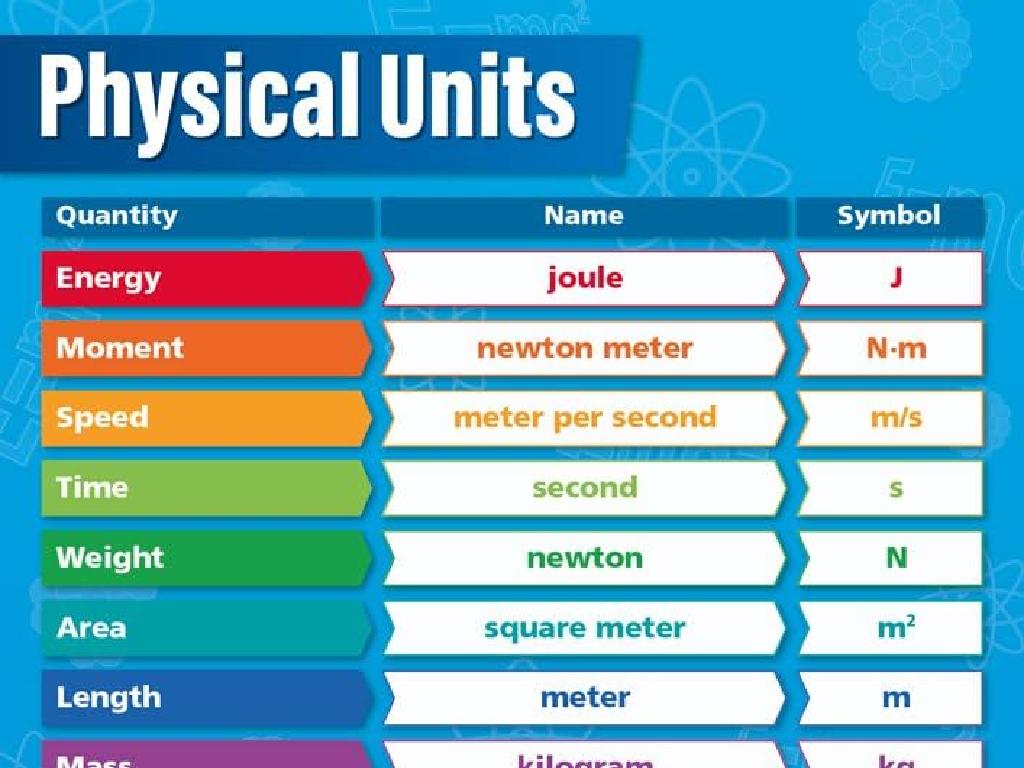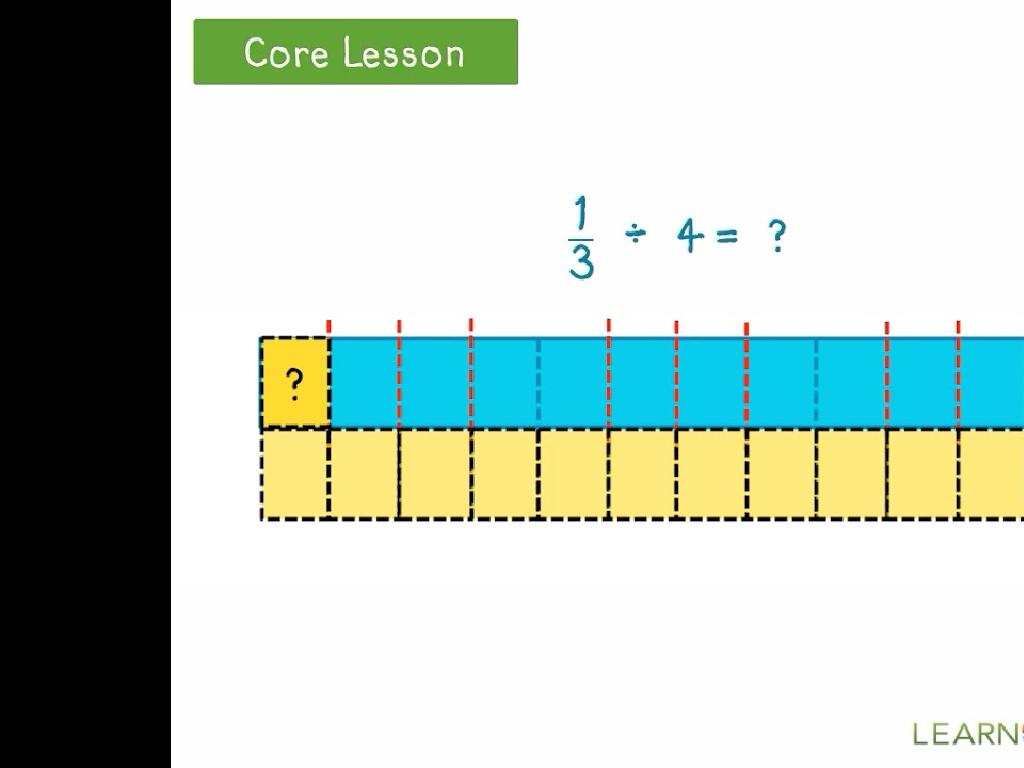Identify And Select Countries Of Asia: Region 3
Subject: Social studies
Grade: Sixth grade
Topic: Asia: Geography
Please LOG IN to download the presentation. Access is available to registered users only.
View More Content
Exploring Asia: Region 3
– Asia’s vastness and diversity
– What are ‘regions’ in geography?
– ‘Regions’ divide large areas into manageable parts
– Focus on Asia’s Region 3
– Region 3 includes countries like Thailand, Vietnam, and Malaysia
– Identifying countries in Region 3
– Use a map to locate each country in Region 3
|
This slide introduces students to the geographical complexity of Asia, the largest continent. Emphasize Asia’s diversity in terms of culture, climate, and geography. Explain the concept of ‘regions’ as a way to study large areas by breaking them down into smaller, more focused sections. Today’s lesson will concentrate on Region 3 of Asia, which includes Southeast Asian countries. Provide a map and encourage students to identify and mark the countries in Region 3, such as Thailand, Vietnam, Malaysia, and others. This activity will help students become familiar with the geography of this part of Asia and understand the concept of regions in a practical context.
Understanding Regions in Geography
– Define a geographical region
– An area with distinct features, like climate or culture
– Characteristics defining a region
– Features like language, religion, or natural resources
– Regions within Asia
– Asia has several regions, such as East Asia, Southeast Asia, and South Asia
– Region 3: South Asia
– Countries like India, Pakistan, and Bangladesh
|
This slide introduces the concept of a geographical region, which is an area defined by certain characteristics that set it apart from other areas. These characteristics can include physical features like climate and landforms, or human features like language and religion. Provide examples of different regions within Asia to help students visualize the concept. Focus on Region 3, South Asia, and discuss its defining features and countries. Encourage students to think about what makes their own region unique as a way to connect with the material.
Exploring Asia’s Diversity
– Asia’s vast cultural diversity
– Home to numerous languages, religions, and traditions
– Asia’s global significance
– Largest continent, economic and political powerhouse
– Overview of Asia’s geography
– From deserts to rainforests, mountains to islands
– Focus on Region 3 countries
– Identify countries like India, China, Japan in Region 3
|
This slide aims to introduce students to the incredible diversity found within the continent of Asia, both culturally and geographically. Emphasize Asia’s role as a significant player on the global stage due to its size, population, and economic influence. Provide a brief overview of the different regions, focusing on Region 3, which may include countries like India, China, and Japan. Encourage students to explore the unique characteristics of each country within this region. The slide sets the stage for a deeper dive into the specific countries of Region 3 in subsequent lessons.
Exploring Asia: Focus on Region 3
– Map identification of Region 3
– Use a map to locate countries like Vietnam, Thailand, and Malaysia
– Unique features of Region 3
– Discuss landscapes, climate, and landmarks like Ha Long Bay, Thai beaches
– Significance of each country
– Explore how countries contribute to Asia’s diversity and global influence
– Cultural and economic impact
– Understand how traditions and economies shape the region’s role in the world
|
This slide aims to help students identify and understand the countries of Asia’s Region 3. Start with a map exercise to locate each country, emphasizing Vietnam, Thailand, and Malaysia. Discuss the unique geographical features, such as Vietnam’s Ha Long Bay and Thailand’s tropical beaches, which attract tourists worldwide. Highlight the importance of each country in terms of culture, history, and economy, and how they contribute to the diversity and global influence of Asia. Encourage students to consider the cultural and economic impacts these countries have on the region and the world. This will provide a comprehensive overview of Region 3’s role in the broader context of Asian geography.
Country Profiles: Asia Region 3
– Explore Region 3 countries
– Learn capitals, languages, populations
– Capitals like Islamabad, Languages like Urdu, Populations in millions
– Discover cultural highlights
– Traditions, food, festivals unique to each country
– Understand notable geography
– Mountains, rivers, and landmarks specific to Region 3
|
This slide aims to introduce students to the diverse and complex Region 3 of Asia. Students will explore individual countries within this region, learning about key facts such as capital cities, official languages, and population sizes. Additionally, they will discover cultural highlights that make each country unique, including local traditions, cuisine, and festivals. The notable geographical features of each country, such as significant mountain ranges, rivers, and landmarks, will also be discussed. Encourage students to take notes on these aspects and to think about how geography and culture are interconnected. This will serve as a foundation for understanding the broader social and environmental context of the region.
Map Activity: Explore Asia’s Region 3
– Engage with an interactive map
– Locate and label Region 3 countries
– Find countries like Vietnam, Laos, or Thailand
– Understand map keys and symbols
– Map keys explain symbols and colors
– Discuss the importance of map skills
– Why are map reading skills crucial for understanding geography?
|
This slide introduces an interactive map activity aimed at helping students identify and label countries in Asia’s Region 3. The activity will reinforce their understanding of geography and improve their map-reading skills. Students should be encouraged to use the map key to decipher various symbols and colors representing different geographical features. Teachers should facilitate a discussion on the importance of map skills in understanding the world around us. Possible activities include having students work in pairs to find countries, use the map key to identify capital cities, and share interesting facts about each country they label.
Region 3: Climate, Terrain, and Adaptation
– Diversity of climates in Region 3
– Ranges from tropical to temperate zones
– Various terrain types in Region 3
– Includes mountains, plains, and coastlines
– Impact of terrain on lifestyle
– Terrain influences housing, agriculture, and transportation
– How people adapt to Region 3’s environment
– Adaptations may include stilt houses, terrace farming, and unique clothing
|
This slide aims to explore the different climates and terrains of Asia’s Region 3 and how these geographical features influence the lifestyle and adaptations of the people living there. Students should understand that climate can vary greatly in this region, affecting the way people live. The terrain, whether it be mountainous regions or fertile plains, also plays a significant role in determining the agricultural practices, types of houses, and transportation methods used by the inhabitants. Discuss examples of adaptations such as the use of stilt houses in flood-prone areas or terrace farming in hilly regions. Encourage students to think about how they would adapt their own lifestyles to different environmental conditions.
Economic Activities in Asia: Region 3
– Overview of Region 3 economies
– Explore the economic landscape and GDP sources
– Major industries and impact
– Industries like technology, manufacturing, and services
– Common agricultural practices
– Techniques like terracing, irrigation, and crop rotation
– Key agricultural products
– Products such as rice, tea, and spices
|
This slide aims to give students an understanding of the economic activities prevalent in Asia’s Region 3. Begin with a general overview of the economies, discussing the various sources that contribute to the GDP such as technology, manufacturing, and services. Highlight the importance of major industries and their roles in the global market. Discuss agricultural practices that are unique or widely used in the region, such as terracing on mountain slopes, irrigation systems, and the practice of rotating crops to maintain soil fertility. Identify key agricultural products that are significant to the region’s economy and are also exported, like rice, which is a staple food, tea, and a variety of spices that the region is famous for. Encourage students to think about how these economic activities might be similar or different from their own region.
Cultural Exploration of Asia: Region 3
– Diversity in Region 3 cultures
– Explore the variety of traditions, languages, and religions.
– Festivals and traditions
– Learn about Diwali in India, Lunar New Year in China, and more.
– Unique culinary delights
– Discover sushi from Japan, kimchi from Korea, and other regional foods.
– Understanding cultural significance
|
This slide aims to give students a glimpse into the rich cultural tapestry of Asia’s Region 3. Highlight the diversity found within this region, including the various languages, religions, and ethnic groups. Discuss significant festivals such as Diwali in India and Lunar New Year in China, explaining the history and how they are celebrated. Introduce students to the unique foods of each country, like sushi from Japan and kimchi from Korea, and discuss how these culinary traditions reflect the culture and geography of the region. Encourage students to think about the cultural significance behind these elements and how they contribute to the region’s identity.
Class Activity: Explore Asia’s Region 3
– Form research groups
– Each group selects a Region 3 country
– Investigate your country’s geography, culture, and history
– Look for key facts like capital city, major languages, and traditional festivals
– Create a presentation on your country
– Include maps, flags, and other visuals in your presentation
|
This class activity is designed to engage students with the geography of Asia, specifically focusing on Region 3. Divide the class into small groups and assign each group a different country from Region 3 of Asia. Provide resources such as atlases, textbooks, and internet access for research. Each group should look into their country’s geographical features, cultural practices, and historical milestones. Encourage them to find interesting facts and visuals to include in their presentation. Possible activities: 1) A scavenger hunt for information, 2) A role-play interview with a historical figure, 3) Creating a cultural artifact, 4) A mock travel agency promoting their country. This will culminate in a short presentation where they will share their findings with the class, allowing students to teach and learn from each other.
Conclusion: Asia’s Region 3 Reflection
– Recap of Asia’s Region 3
– Share our country discoveries
– Discuss the unique aspects of each country learned
– Reflect on regional significance
– Why is it important to learn about different regions?
– Appreciate diverse geography
– How does geography shape a country’s culture and identity?
|
As we wrap up today’s lesson, let’s revisit the key points about Asia’s Region 3. Encourage students to share interesting facts and insights they’ve gained about the countries within this region. Facilitate a discussion on the importance of understanding the diversity and significance of different regions, not only in Asia but around the world. Highlight how geography can influence a country’s culture, economy, and lifestyle. This reflection will help students appreciate the interconnectedness of the world and the value of geographical knowledge. Ask students to think about how the geographical features they’ve learned might affect the daily lives of people living in those countries.






